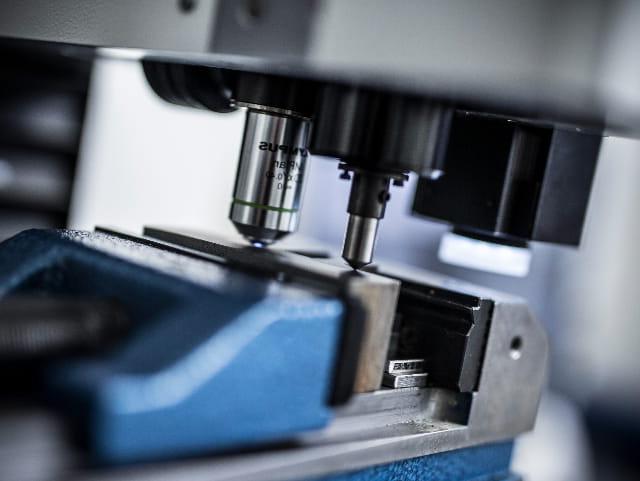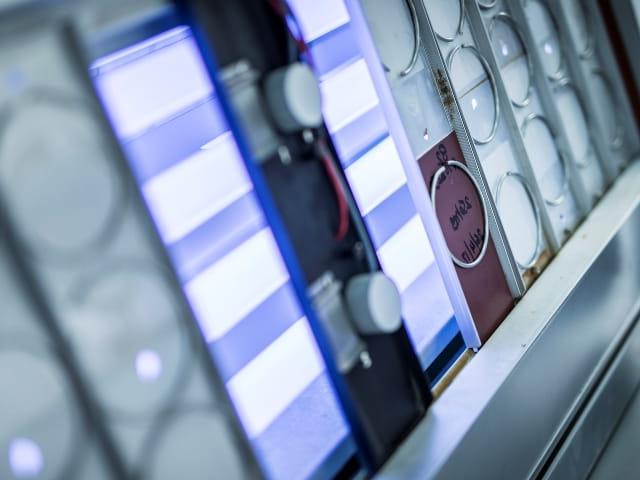Talk to an Expert
+1 888 786 7555Weld Failure Analysis - Identifying the Root Cause of Weld Defects
Even when the cause of weld defects may seem obvious, 仔细的法医调查揭示了节省时间和金钱的机会. 下面的案例研究说明了焊接失效分析结果如何能够确定焊接过程中的漏洞和需要改进的地方.
Weld failure analysis with electron microscopy
Excellent quality metallurgical welds that are reliable, robust, and fully fit for service are absolutely paramount to human safety. This is especially true in aerospace, transportation, and energy sectors where metallurgical weld failures often result in catastrophic events that are extremely costly; and, even worse, end up taking human life. The weld-metal itself; however, should not always be the very first thing to blame. 正确和准确地识别焊接失效的根本原因需要客观和彻底的法医调查,几乎总是依赖于电子显微镜(EM)的应用。.
以下是几个详细的法医分析示例,其中EM和光学工作流程已用于确认有缺陷和/或污染的焊接材料是故障的根本原因. 在每种情况下,也可以确定焊缝中观察到的缺陷的最可能途径.
The impact of weld porosity on welding failures
![焊缝金属内部明显且较大的空洞(a)导致多源疲劳断裂[裂纹的进展线和多重疲劳裂纹的合并用黄色箭头表示].](/-/media/images/services/materials-testing/weld-defect-case-study-weld-porosity.png?h=598&w=800&hash=3719032700D6229035D2E5EFBC51EECE)
案例1:焊缝金属(a)内明显的大空洞导致多源疲劳断裂[(a)中黄色箭头表示多个疲劳裂纹的进展线和合并]. This large series of void structures in the weld metal was initially thought to be formed because of contamination; and, 通过背散射电子进行的低空间分辨率成像(b)最初表明这可能是真的{因为空洞底部的明显z -对比度}.
Moderate resolution imaging (c) at ~7500X coupled with energy dispersive spectroscopy (EDS); however, 表明污染并非如此,因为许多区域(蓝色三角形)显示主要存在铁/锰,这是已知的焊接金属的特征. 这种方法进一步揭示了大原生代基部的表面形貌, secondary, and tertiary voids was crystallographic, faceted, highly directional, and non-contaminated (yellow ellipses); thus confirming weld metal solidification occurred within void spaces that were filled with entrapped gas.
以更高的空间分辨率(~30,000X) further revealed that nano-crystalline Fe-rich (i.e. not contaminated) weld metal had directionally solidified as “fingers” within the micro-voids; additionally confirming that high-velocity gas impingement most likely occurred during welding.
Preventing weld failures with good welding practice

案例2:大直径管道上的环焊缝断裂,通过追踪收敛步骤和止损线到(a)中所示的位置来确定断裂的起源。. 然后立体光学显微镜显示焊缝金属呈现烧穿(黑色椭圆)。, 这证实了现场作业人员铺设焊接头的速度太慢,从而导致了烧穿的时间.
光学检查也表明,污染存在于断裂的起源. 通过扫描电镜/能谱仪观察断裂的来源,然后确认存在严重污染, and was due to Ti, Si, Ca, O, and Al (blue triangles). 然后通过原点(c)的横截面,最终确认观察到的断口表面的污染已嵌入焊缝金属中。. This location was then further analyzed via SEM/EDS (d).
通过EM进一步分析横截面(白色钻石),还发现氧化铁薄片嵌入了富含Ti/Si/Ca的污染物中. 花时间对横截面进行额外的分析不仅证实了焊缝中存在污染, but also that a rusted, dirty welding rod was most likely grabbed in the field, hastily cleaned, and used to manufacture the remaining portion of the girth weld.
这个分析案例强调了良好焊接实践的重要性,以及单个步骤的简单疏忽如何导致灾难性的释放.
How Element can help
无论您的要求是焊接程序还是焊工认证, weld testing, inspection or forensic failure analysis,我们的焊接服务可以在资产生命周期的每个阶段为您提供支持. For more information about our weld testing methods, contact an expert today.
Find related Resources
More from Element

Weld Testing
Our team includes Certified Welding Inspectors (CWI), Certified Welding Engineers (CWEng), 以及专门的im体育平台app下载技术人员来协助跨部门和应用的项目.

Failure Analysis
了解Element的全球故障分析专家团队如何从过去中吸取教训, to help prevent failures in service.

Identifying the root causes of weld failures
阅读此免费白皮书去背后的一个涂层失败背后的根本原因的调查的场景.

Fatigue Testing of Pipeline Girth Welds
阅读我们的案例研究,了解验证管道环焊缝疲劳性能的方法. In particular, 在规划测试程序以确定此类焊缝的疲劳性能时需要考虑的变量



